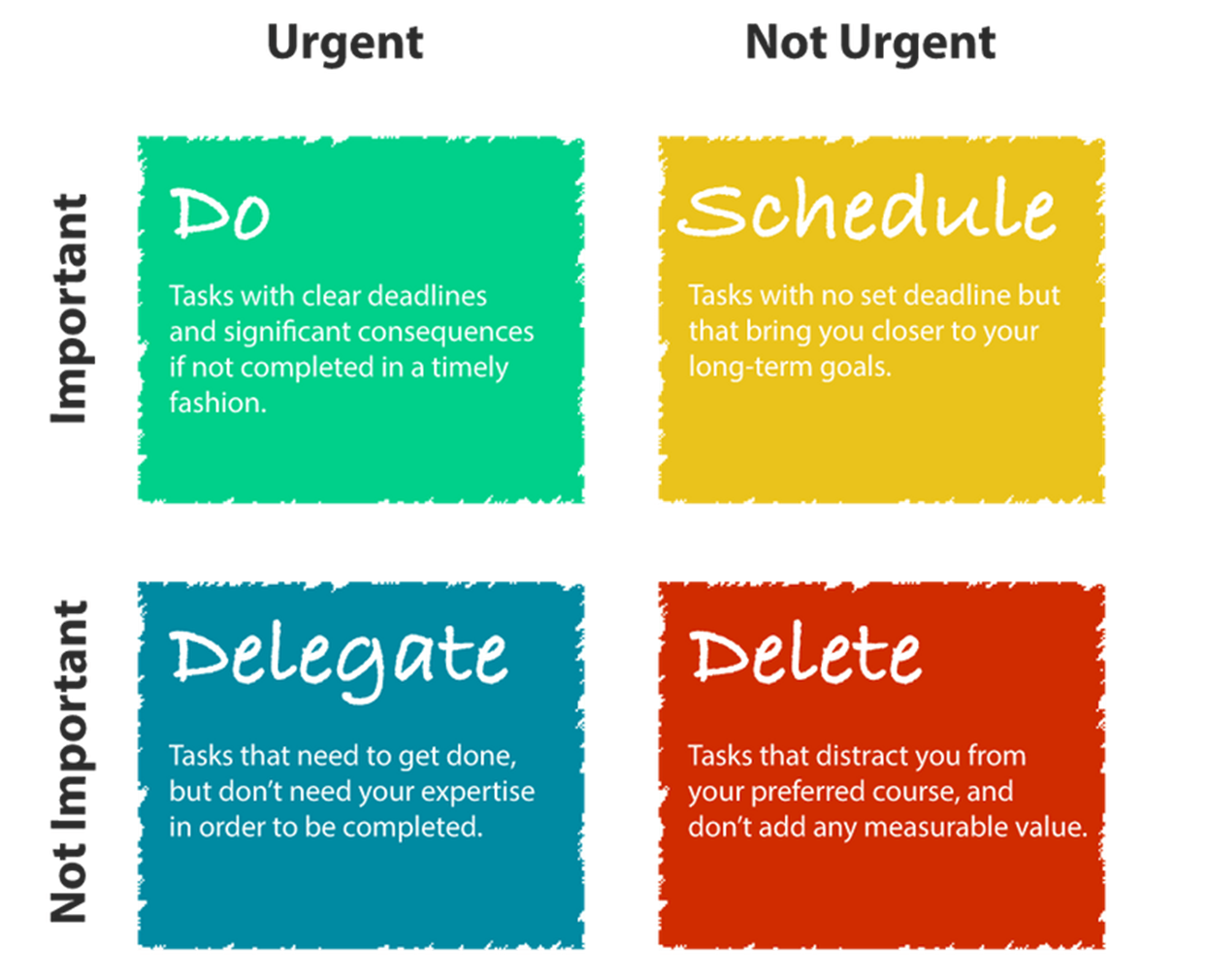Mastering the Eisenhower Matrix for Increased Productivity and Success

Dwight Eisenhower, president of the United States from 1953 to 1961, had a passion for productivity. His strategy to use what we know today as the Eisenhower Matrix as a decision-making tool helped him in his quest to get more done in work and life. Although he achieved numerous accolades in his professional life, he still had time to pursue hobbies such as oil painting and golf. Let’s see what we can learn from this strategy.
The Eisenhower Matrix, also called the Urgent-Important Matrix, and referred to by Stephen Covey’s book, The Seven Habits of Highly Effective People, is a prioritisation tool that helps individuals categorise tasks based on urgency and importance. The matrix consists of four quadrants:
- Urgent and Important (Quadrant I): Tasks in this quadrant require immediate attention and are critical to one's success or well-being. These are often deadline-driven or unforeseen emergencies that demand immediate action.
- Not Urgent but Important (Quadrant II): This quadrant includes tasks that are crucial for long-term success and personal development. These tasks are not urgent, but investing time in them can prevent crises and contribute to personal growth, strategic planning, and relationship-building.
- Urgent but Not Important (Quadrant III): Tasks in this quadrant are often time-sensitive but may not contribute significantly to long-term goals. They are often distractions or interruptions that, while requiring attention, do not align with one's major objectives.
- Not Urgent and Not Important (Quadrant IV): This quadrant involves tasks that are neither urgent nor important. These tasks are time-wasters and should be minimised or eliminated to create more time for activities that align with one's goals and values.
Image from https://slab.com/blog/eisenhower-matrix/
How would you use the Eisenhower Matrix to plan your day or week? Have a look at your current to-do list. Add them to the Eisenhower’s Matrix, each in the Quadrant where they fit best. This activity gives you a pretty good perspective as to what should be on your to-do list and what does not belong there. Often, the unimportant and non-urgent items don’t end up on our to-do list, but we do them anyway, so you need to be a bit critical here and reflect on what the things you do that steal your time (remember, taking a break is an important activity and does not belong in the “Delete” category).
See which of the tasks in the urgent but not important category you can delegate or gently get rid off. Is there a more appropriate person or bot that can take on the task? Sometimes the answer is a plain and simple no, sometimes it is just not possible to shuff some tasks onto someone else. These tasks can remain on your to-do list but do be aware that the “Delegate it” quadrant should not be too full. If it becomes populated, see how you can bring it back under control.
After you have delegated what you can delegate, tackle those things that are urgent and important. Get them done. Work focused and don’t get distracted. Although these are important and urgent, don’t allow these tasks to consume all your time. Leave some space for the important but not urgent tasks because those are the ones that your future self will thank you for.
Image from https://todoist.com/productivity-methods/eisenhower-matrix
Eisenhower’s matrix encourages individuals to focus on important but not urgent priorities, emphasising proactive, strategic planning to prevent crises and enhance overall effectiveness. By categorising tasks based on urgency and importance, individuals can prioritise their time and efforts more efficiently, leading to increased productivity and a better balance between short-term demands and long-term goals.
For this and similar content, visit the Productivity Top Tips playlist on the Research Masterminds Youtube channel.
Looking for ongoing support throughout your research journey? The Research Masterminds Success Academy offers live workshops, helpful resources, and a supportive community of fellow postgraduate students. It's a space designed to help you develop academic skills, maintain motivation, and complete your research while still enjoying life beyond your studies.
Cover image by Photo by Julien Bachelet


0 comments
Leave a comment
Please log in or register to post a comment